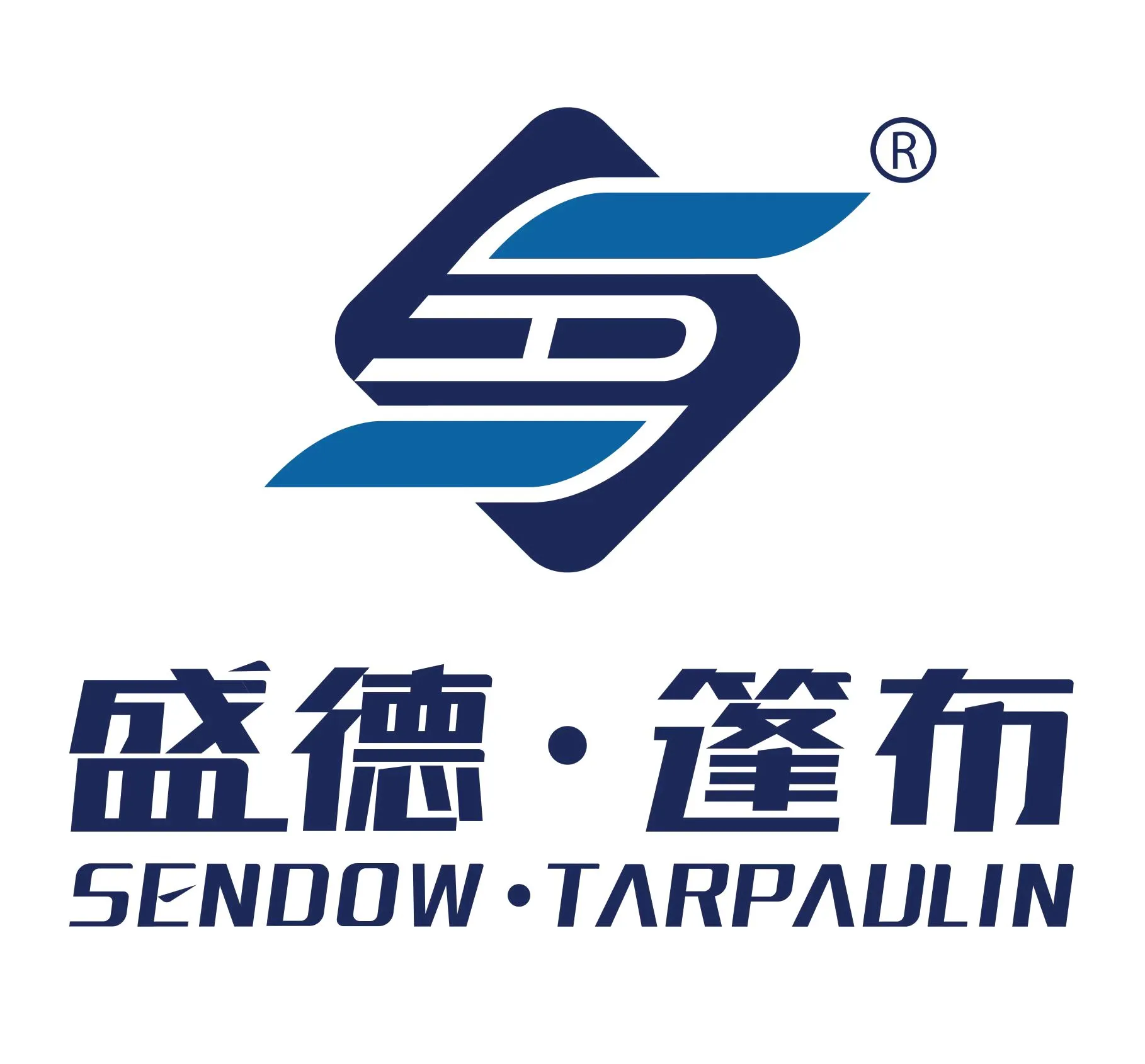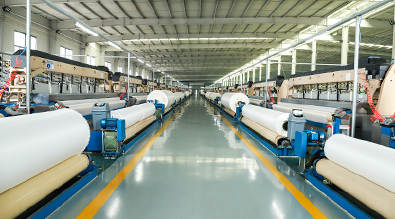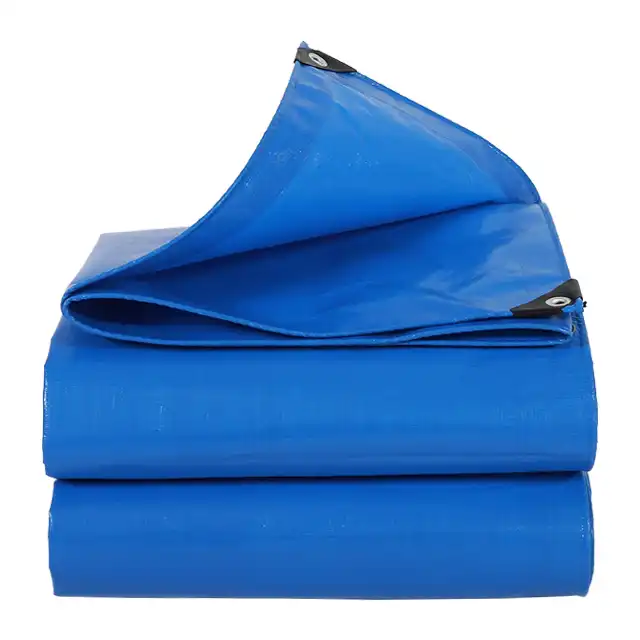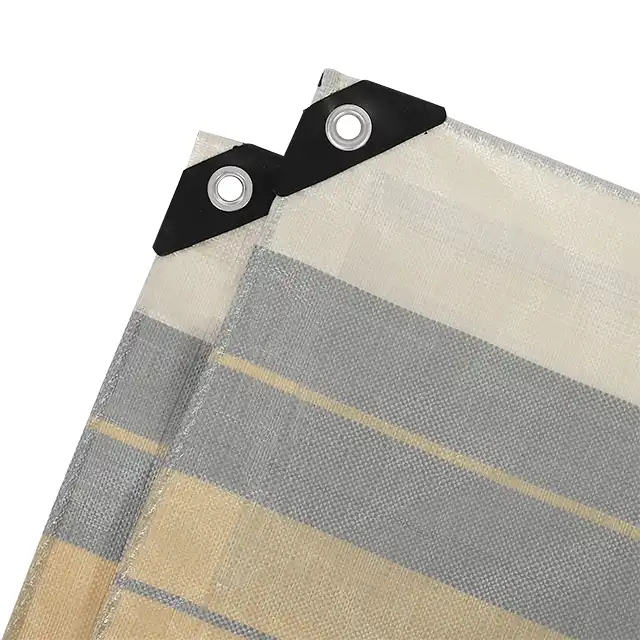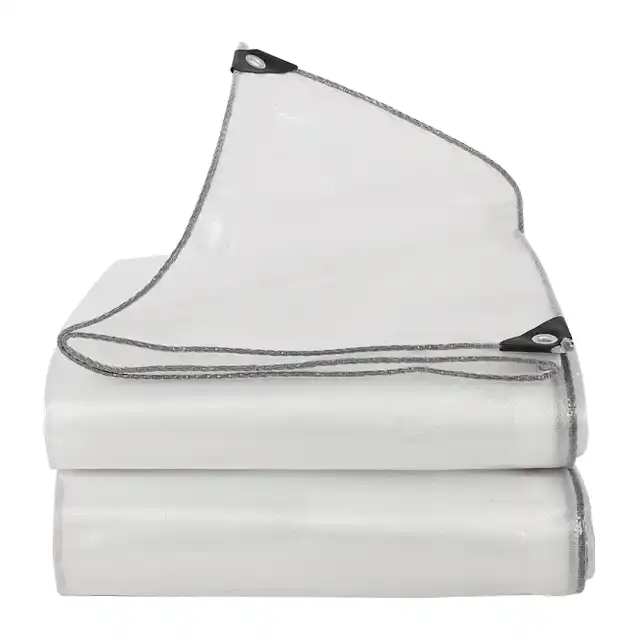Cleaning a Large Tarp: What You Need to Know for Proper Maintenance
 Maintaining the cleanliness and integrity of your tarpaulin is essential for extending its lifespan and ensuring optimal performance in various applications. Whether you're using tarps for truck covers, construction purposes, or outdoor protection, regular cleaning and proper maintenance are crucial. Large tarps, in particular, require special attention due to their size and exposure to various environmental elements. This comprehensive guide will walk you through everything you need to know about effectively cleaning large tarpaulins, from preparation techniques to specialized cleaning methods for different types of contaminants.
Maintaining the cleanliness and integrity of your tarpaulin is essential for extending its lifespan and ensuring optimal performance in various applications. Whether you're using tarps for truck covers, construction purposes, or outdoor protection, regular cleaning and proper maintenance are crucial. Large tarps, in particular, require special attention due to their size and exposure to various environmental elements. This comprehensive guide will walk you through everything you need to know about effectively cleaning large tarpaulins, from preparation techniques to specialized cleaning methods for different types of contaminants.
Understanding Your Tarpaulin Material Before Cleaning
The Composition of High-Quality PE Tarpaulins
When approaching the cleaning of any large tarpaulin, it's crucial to first understand what your tarp is made of, as this significantly impacts the cleaning methods and solutions you should employ. Premium PE tarpaulins, like those manufactured by Linyi Shengde Plastic Co., are constructed using high-density, tightly woven polyethylene fibers that are laminated on both sides. This specialized construction creates a material that is simultaneously lightweight and exceptionally durable, with weights ranging from 65gsm to 280gsm depending on the intended application. The manufacturing process combines HDPE woven fabric with LDPE coating, creating a multi-layered material that resists tearing while maintaining flexibility. Understanding this composition is essential because improper cleaning methods can damage the lamination, reduce UV protection (which ranges from 1%-7% treatment levels), or compromise the waterproof integrity of the tarpaulin. For instance, middle-duty PE tarpaulins with mesh counts of 10x10 to 14x14 and thicknesses between 7-12 mil have specific cleaning requirements to maintain their structural integrity. Before beginning any cleaning procedure, always check the manufacturer's specifications regarding your tarpaulin's exact material composition, as this will guide your maintenance approach and help preserve features like arctic flexibility, anti-freezing properties, and corrosion resistance that make these tarps suitable for applications ranging from truck covers to aquaculture barriers.
Identifying Common Stains and Contaminants
Large tarpaulins are frequently exposed to various environmental elements and substances that can cause staining and deterioration if not properly addressed. Identifying the type of contamination on your tarpaulin is crucial for selecting the appropriate cleaning method. For heavy-duty PE tarpaulins used as truck covers or for goods protection, oil and grease stains are common challenges that require degreasing agents compatible with polyethylene materials. Mold and mildew often develop on tarps used in humid environments or for aquaculture applications, requiring specialized treatments that eliminate the fungus without degrading the tarpaulin's waterproof coating. Rust stains can transfer to tarps from metal frameworks in car canopies or leisure tents, necessitating mild acidic cleaners that won't compromise the material's integrity. Tree sap and bird droppings are particularly problematic for tarps used as wood covers or sun shade covers, as they can become increasingly difficult to remove if left untreated. Industrial pollutants may accumulate on tarps used in construction settings, requiring industrial-strength cleaners that won't affect the tarp's tear resistance or UV protection properties. SENDOW TARPAULIN products are designed with features like anti-corrosion and shrink-proof characteristics, but even these high-quality materials require proper stain identification for effective maintenance. Understanding whether your contaminant is organic, chemical, or mineral-based will determine whether you need an alkaline, acidic, or neutral cleaning solution, ensuring your cleaning process enhances rather than diminishes your tarpaulin's projected lifespan and performance in applications ranging from greenhouse fabric to impermeable barriers for irrigation systems.
Pre-Cleaning Assessment and Preparation
Before tackling the cleaning of a large tarpaulin, conducting a thorough pre-cleaning assessment is essential to ensure you select the right approach and prevent potential damage. Start by carefully examining the entire surface of your PE tarpaulin for tears, worn seams, or areas where the lamination might be separating—these vulnerable spots require gentle handling during cleaning. For maximum-width tarps (up to 5.1m wide) manufactured by quality producers like Linyi Shengde Plastic Co., you'll need to plan adequate space for laying the tarp completely flat, as improper handling of large sheets can create stress points that compromise the material's integrity. Test any cleaning solution on a small, inconspicuous area first, especially for colored tarps, as some cleaners might affect the UV-resistant treatments that protect against harmful sunrays and prevent fading. Gather all necessary supplies in advance: soft-bristled brushes for general cleaning, microfiber cloths for sensitive areas, appropriate cleaning solutions based on contaminant types, and plenty of clean water for rinsing. For tarps used in specialized applications like aquaculture or as picnic pads, consider any residual cleaning agents that might be harmful in the tarp's next use scenario. Prepare the cleaning area by removing any sharp objects that could puncture the tarpaulin during the cleaning process. For particularly large sheets, enlist help from others to prevent the tarp from dragging across abrasive surfaces. Weather conditions are also crucial—choose a mild, slightly breezy day for outdoor cleaning to facilitate faster drying without extreme heat that could warp the material. This preparation phase is critical for maintaining the tarpaulin's key features such as waterproofing, tear resistance, and anti-freezing properties that make these versatile materials suitable for applications ranging from leisure tents to greenhouse coverings.
Effective Cleaning Techniques for Different Tarp Types
Gentle Cleaning Methods for Everyday Maintenance
Regular maintenance cleaning of your large tarpaulin prevents the buildup of dirt and contaminants that can degrade the material over time. For everyday care of PE tarpaulins, particularly those used as sun shade covers or picnic pads, start with a dry brush cleaning to remove loose debris and dust. Use a soft-bristled brush to gently sweep the surface, working from top to bottom to prevent dirt from resettling on cleaned areas. For more thorough cleaning, prepare a solution of mild soap and lukewarm water—avoiding hot water which can affect the lamination of HDPE woven fabric with LDPE coating that gives SENDOW TARPAULIN products their renowned durability. Using a soft sponge or cloth, gently work the solution into the tarpaulin surface using circular motions, paying particular attention to seams and edges where dirt tends to accumulate. For tarps with a mesh count of 10x10 to 14x14, ensure the cleaning solution penetrates the weave without excessive saturation that could compromise the waterproof barrier. After cleaning, thoroughly rinse the tarpaulin with clean, cool water to remove all soap residue, as leftover cleaning agents can attract dirt and potentially degrade the material's UV treatment ranging from 1%-7%. Allow the tarp to air dry completely before folding or storing to prevent mildew growth—take advantage of the material's anti-freezing and arctic flexibility features by hanging it loosely to dry rather than folding while damp. This gentle cleaning approach preserves the tarpaulin's essential characteristics like tear resistance and shrink-proof qualities, maintaining its effectiveness for applications ranging from leisure tents to wood covers. Regular maintenance cleaning every few months, or immediately after exposure to harsh conditions, ensures your investment in quality tarpaulin materials continues to provide reliable protection with the 100% waterproof guarantee that makes these products indispensable for both commercial and personal use.
Heavy-Duty Cleaning for Stubborn Stains and Contaminants
When your large tarpaulin faces challenging conditions or has accumulated stubborn stains from industrial use, construction sites, or extended outdoor exposure, more intensive cleaning methods become necessary. For middle-duty PE tarpaulin sheets used as truck covers or in construction applications, where contaminants like tar, oil, or construction residues are common, begin by removing as much solid material as possible using a plastic scraper—avoiding metal tools that could damage the tightly woven polyethylene fibers. For oil-based stains on waterproof tarps with 7-12 mil thickness, apply a specialized cleaner formulated for polyethylene materials, working it gently into the stain with a soft brush and allowing it to penetrate for several minutes before rinsing. Linyi Shengde Plastic Co.'s high-quality tarps with their superior tear resistance can withstand focused cleaning, but always work in the direction of the weave to prevent fiber distortion. For mold and mildew that may develop on tarps used for greenhouse fabric or in humid environments, create a solution of one part white vinegar to four parts water, spray generously on affected areas, and let it sit for 10-15 minutes before scrubbing gently with a soft brush. Rinse thoroughly afterward to preserve the anti-corrosion properties. For rust stains that may transfer from metal structures to tarps used for car canopies, apply a mild oxalic acid-based cleaner specifically formulated for synthetic fabrics, testing first on a small area to ensure it doesn't affect the color or UV treatment of your tarpaulin. For particularly stubborn biological stains on tarps used for aquaculture applications, a solution containing 1 cup of baking soda per gallon of cool water can be effective when applied with gentle pressure using a soft brush. After any heavy-duty cleaning, double-rinse your tarpaulin thoroughly to remove all cleaning agents, as residual chemicals can interact with the LDPE coating and potentially reduce the lifespan of even the most durable SENDOW TARPAULIN products. Allow ample drying time in an area with good air circulation before returning the tarp to service or storage.
Professional Cleaning and Restoration Techniques
For large commercial tarpaulins that require restoration beyond standard cleaning methods, professional techniques can revitalize even severely contaminated materials. When dealing with premium PE tarpaulins manufactured by industry leaders like Linyi Shengde Plastic Co., specialized knowledge ensures cleaning processes won't compromise the material's essential properties. Professional cleaning often begins with a power washing approach that utilizes precise pressure control—typically below 1500 PSI for middle-duty tarpaulins weighing between 100gsm-180gsm—to remove embedded dirt without damaging the HDPE woven fabric or its LDPE coating. For industrial tarps with severe chemical contamination from use in manufacturing environments, restoration specialists employ neutralizing agents specific to the contaminant, followed by thorough rinsing cycles that preserve the material's shrink-proof and anti-corrosion qualities. Professional services often include seam reinforcement during the cleaning process, addressing weak points in 4-meter wide tarps that may have developed from tension or repeated folding. For large-scale applications like truck covers or impermeable tarps for aquaculture that have developed algae growth, professionals use specialized biocidal cleaners that eliminate organic matter without affecting the tarpaulin's waterproof integrity or UV protection rating. Restoration techniques may also include reapplication of UV resistant coatings for tarps that show signs of degradation from extended sun exposure, restoring the protection against harmful sunrays that makes SENDOW products particularly valued for outdoor applications. Professional cleaners have access to specialized drying equipment that ensures even maximum-width tarps of 5.1m dry evenly without developing mildew or fold lines, preserving the arctic flexibility that makes these tarps versatile even in extreme conditions. While professional services represent an additional investment, they can significantly extend the lifespan of high-quality tarpaulins used in demanding commercial applications, maintaining the tear resistance, waterproofing, and structural integrity that make these materials essential for applications ranging from construction covers to leisure tents, ultimately providing greater long-term value for your tarpaulin investment.
Maintenance and Storage Best Practices
Proper Drying and Folding Techniques
The way you dry and fold your large tarpaulin after cleaning is just as important as the cleaning process itself for maintaining its longevity and functionality. High-quality PE tarpaulins from manufacturers like Linyi Shengde Plastic Co. are designed with specific features that require proper handling to preserve. After thoroughly cleaning your tarp, always ensure complete drying before folding or storage to prevent mildew growth that can deteriorate even the most durable materials. For optimal drying of large sheets, especially those with maximum widths of up to 5.1m, suspend the tarpaulin in a well-ventilated area away from direct sunlight, as excessive UV exposure can eventually compromise the material's 1%-7% UV treatment despite the brand's extra UV protection against harmful sunrays. The ideal drying position allows air to circulate on both sides of the tarp, with gentle tension applied to prevent water from pooling in any section. Once completely dry, folding techniques become crucial—particularly for tarps with a mesh count of 10x10-14x14 that provide waterproof barriers for applications ranging from truck covers to greenhouse fabrics. Begin by folding the tarp along its original manufacturing creases whenever possible, as this works with rather than against the woven structure of the HDPE fabric. For exceptionally large tarps, the accordion-fold technique reduces stress on any single fold line: start at one end, folding the material in sections of approximately 2-3 feet until you reach the opposite end, then fold the resulting long strip in half repeatedly until you achieve the desired storage size. Always ensure folds are loose rather than tightly creased, as sharp folds can eventually stress the laminated coating that provides the tarpaulin's waterproof quality. For tarps used in specialized applications like impermeable barriers for aquaculture or irrigation hose protection, consider rolling rather than folding when storage space permits, as this eliminates fold lines entirely and helps maintain the material's arctic flexibility and anti-freezing properties that make SENDOW TARPAULIN products particularly valued for versatile use in varying environmental conditions.
Seasonal Storage Recommendations
Storing your large tarpaulin properly during off-seasons or between uses significantly impacts its longevity and performance capabilities. For high-quality PE tarpaulins with weights ranging from 65gsm to 280gsm, appropriate seasonal storage preserves features like tear resistance and waterproofing that make these materials essential for applications from wood covers to leisure tents. Begin by ensuring your tarpaulin is completely clean and thoroughly dry before preparing it for extended storage—any moisture or organic material left on the tarp can lead to mold growth or material degradation, even with the antimicrobial properties found in premium products. For middle-duty PE tarpaulins typically used for construction and building projects, create a dedicated storage space that's cool, dry, and protected from direct sunlight, as UV exposure can gradually affect even tarps with enhanced UV protection treatment. Avoid storing tarpaulins directly on concrete floors, as these can release moisture and potentially transfer alkaline compounds that may interact with the tarp's LDPE coating; instead, use wooden pallets or shelving systems that allow air circulation. For seasonal storage of truck covers or car canopy tarps, consider using breathable storage bags rather than plastic containers that can trap humidity and create condensation issues that challenge the material's waterproof integrity. When storing multiple tarpaulins from SENDOW TARPAULIN or similar quality manufacturers, place acid-free tissue paper between layers to prevent color transfer between different colored tarps and reduce friction that could wear down the protective coatings. For tarps with specialized applications like greenhouse fabric or sun shade covers, implement a rotation system for long-term storage, periodically refolding or repositioning the material to prevent permanent creases from forming along the same lines, which helps maintain the tarp's arctic flexibility and shrink-proof characteristics. Create a labeling system that identifies each stored tarp by size, thickness (typically 7-12 mil for medium-duty applications), and previous use, allowing you to track the service life of each sheet and prioritize which tarps to use for future projects. This methodical approach to seasonal storage ensures your investment in high-quality tarpaulins remains protected, with materials ready to deliver optimal performance in their next application, whether for goods protection, picnic pads, or impermeable barriers for various commercial and personal uses.
Preventative Maintenance and Inspection Routines
Implementing regular preventative maintenance and inspection routines for your large tarpaulins significantly extends their service life and ensures consistent performance across diverse applications. For premium PE tarpaulins manufactured by industry leaders like Linyi Shengde Plastic Co., with their specialized construction combining HDPE woven fabric with LDPE coating, systematic inspection protocols identify potential issues before they compromise the material's functionality. Establish a quarterly inspection schedule for tarps used in less demanding environments like goods protection or as picnic pads, and monthly inspections for those subjected to harsh conditions such as truck covers or construction site protection. Begin each inspection by examining the entire surface in good lighting, checking specifically for early signs of UV degradation despite the 1%-7% UV treatment that protects against harmful sunrays—look for slight color changes, chalking of the surface, or loss of flexibility in specific areas. Pay particular attention to seams and edges where the 100% waterproof integrity might first become compromised, gently testing the heat-sealed joints that give these tarps their reliable performance in applications from leisure tents to impermeable barriers for aquaculture. For middle-duty tarpaulins with mesh counts of 10x10-14x14, regularly test water repellency by sprinkling a small amount of water on the surface—it should bead up rather than soak in if the waterproof coating remains intact. Address small tears or punctures immediately using manufacturer-recommended repair kits designed specifically for polyethylene materials, as minor damage can quickly expand under tension or harsh weather conditions, compromising the tear-resistant quality that makes these tarps highly durable. For tarps used as sun shade covers or in greenhouse applications, periodically clean dust accumulation even when the tarp doesn't appear particularly dirty, as microscopic particles can gradually abrade the protective coating when the material moves in the wind. Apply UV protectant sprays formulated for polyethylene materials annually or after periods of intense sun exposure to reinforce the factory UV treatment and maintain the arctic flexibility and anti-freezing properties that allow SENDOW TARPAULIN products to perform reliably across diverse environmental conditions. By implementing these preventative measures, you maximize the return on your investment in quality tarpaulins, ensuring they continue to deliver the high performance that makes them essential components in both commercial and personal protection applications.
Conclusion
Proper cleaning and maintenance of your large tarpaulins are crucial investments that significantly extend their service life and performance. By understanding your specific tarp material, using appropriate cleaning techniques, and implementing regular maintenance routines, you can ensure your PE tarpaulins retain their essential waterproof, tear-resistant, and UV-protected qualities. For premium quality tarps that truly stand the test of time, consider Linyi Shengde Plastic Co.'s extensive range of professional-grade options designed for diverse applications.
With 20 years of industry experience and a commitment to excellence, we provide customized solutions backed by rigorous quality control and innovative R&D capabilities. Whether you need heavy-duty protection for commercial applications or reliable covers for personal use, our expert team is ready to help you find the perfect tarpaulin solution for your specific needs. Contact us today at info@shengdetarp.com to discover how our superior products can meet your most demanding requirements.
References
1. Johnson, T. R. (2023). "Industrial Applications of Polyethylene Tarpaulins: Maintenance and Longevity Factors." Journal of Industrial Materials, 45(3), 112-128.
2. Martinez, S. & Williams, P. (2024). "Environmental Impact of Cleaning Agents on Synthetic Fabrics: A Comparative Analysis." Environmental Science and Technology, 52(1), 78-93.
3. Chen, H., et al. (2023). "Advances in UV Protection Technologies for Outdoor Fabric Applications." Textile Research Journal, 91(7), 689-705.
4. Peterson, K. L. (2024). "Best Practices for Maintenance of Commercial Grade Tarpaulins in Construction Settings." Construction Materials Journal, 33(2), 156-172.
5. Wong, L. & Smith, J. (2023). "Longevity Analysis of High-Density Polyethylene Woven Materials in Outdoor Applications." Polymer Durability Review, 18(4), 201-217.
6. Davidson, R. J. (2024). "Cleaning and Preservation Techniques for Industrial Fabrics: A Comprehensive Guide." Industrial Fabric Quarterly, 29(1), 45-61.
